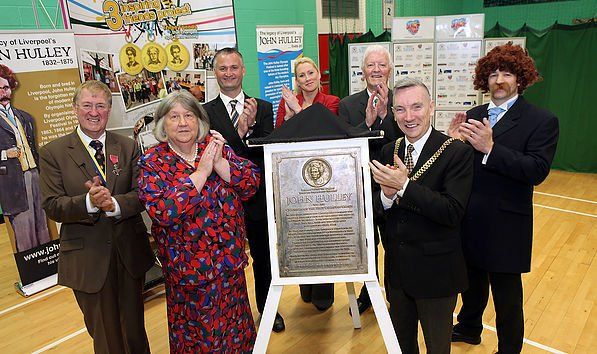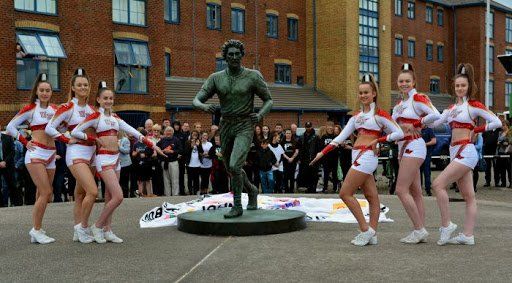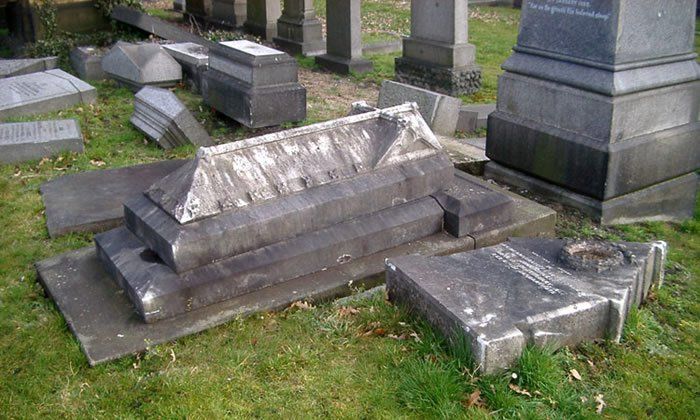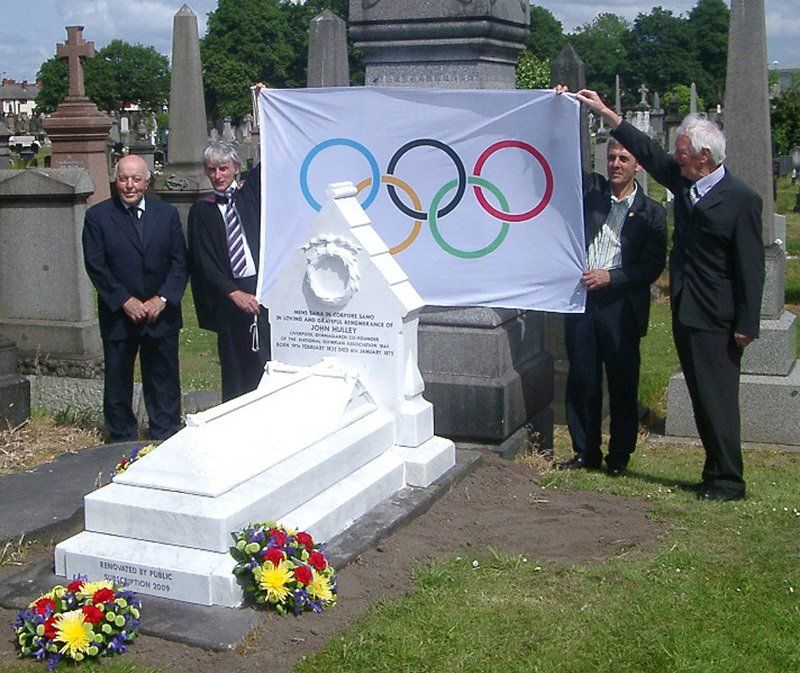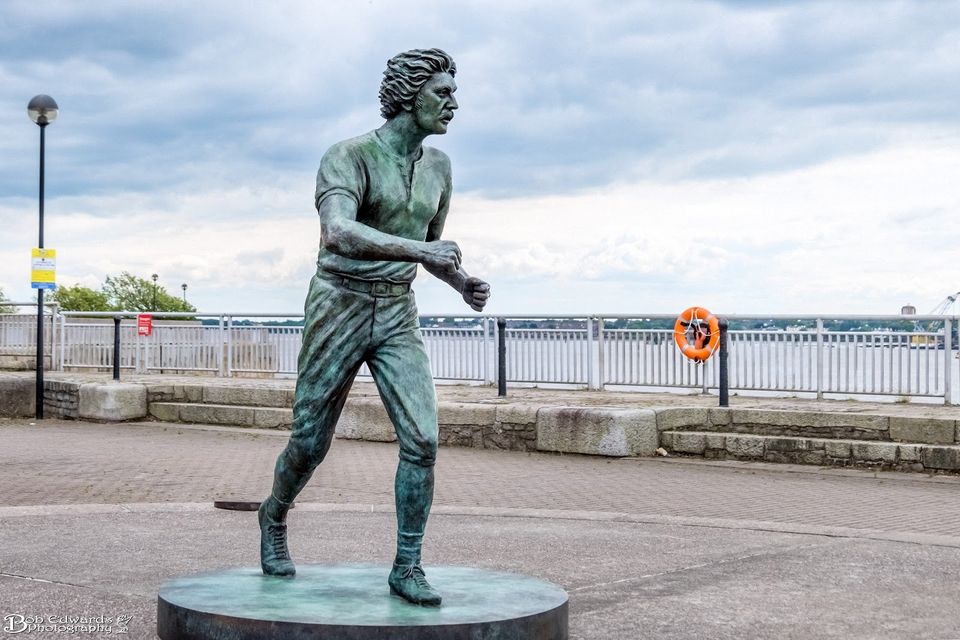In 2012 while London hosted the Olympic Games Liverpool Heartbeat put on our own version of the Olympics. In doing so we ruffled a few feathers with the Olympics Committee, but they couldn't stop us, because Liverpool had the Olympics first!
150 years earlier a Scouser called John Hulley masterminded the 1st National Olympian Games in 1866.
John Hulley Statue Unveiled by Princess Anne in Liverpool
Hulley was a maverick.
Whilst some questioned his sanity, others answered he was as "sane as a lawyer". He pushed boundaries through the way of life he lived. As a gymnast he knew the benefits of sport to achieve a healthy lifestyle.
His grave is inscribed with the latin phrase "Mens Sana in Corpore Sano"
which means "A healthy mind in a healthy body".
Hulley was doing "The Big Society" 150 years before the current government adopted the concept.
He began to define Olympism long before the formation of the International Olympic Committee. History showed his thinking influenced his two friends,
Dr Penny Brooks and Ravenstein, to think on a much larger scale. The result of his ideas and their work influenced the thinking of the young Coubertin to create the International Olympic Committee.
Hulley died aged 35yrs, imagine what he would have achieved had he lived longer. He is one of those people you know you would have loved to have met and whose presence must have filled a room.
Whilst we can guess he was physically strong there is no doubt he was mentally immense. His untimely death and the passing of time would not prevent the recognition and accolade he so richly deserves
And so began our campaign to have the mighty John Hulley recognised as a son of our great city.
If there is one lesson to be learnt from John Hulley's life, it is what can be achieved with clear vision, a steely determination and raw passion. These key life values supersede social backgrounds, education and age.
Ray Hulley Family Historian and Researcher of John Hulley.
Royal Recognition of John Hulley - the forgotten man of British Olympic history
Some members may recall my article published in the July-August 2012 edition of the Journal of One-Name Studies entitled “John Hulley Olympic Instigator”. This was published to coincide with the opening of the London Olympic Games.
I had been attracted initially to the John Hulley story, not only because he may have been a long-lost relative, but because he had a vision of the benefits of physical exercise and its place in the life of ordinary people. My interest was stimulated by an article written by the late Dr. Don Anthony, an ex-Olympic athlete and Executive Member of the International Society of Olympic Historians in the Winter 2001 edition of the Journal of Olympic History entitled "Organic Olympism or Olympic Orgy. - The Roots of Modern Olympism." (Note the clever use of the 5 Olympic rings in the title!). The mystery of his disappearance from the annals of Olympic history made it even more challenging to a family historian.
My researches of John Hulley started by tracing his grave in Smithdown Road cemetery. This was in a terrible condition with the almost unreadable headstone detached from the grave covers and the stonework adversely affected by over 130 years of atmospheric pollution. I decided to raise funds for its renovation and thanks to donations from the International Olympic Committee, the British Olympic Foundation, members of the public and of my family, I engaged Messrs Welsbys to undertake the work. The results were amazing, with the white marble being brought back to its original colour.
A re-dedication ceremony was held in June 2009 conducted by the Rev. Graham Murphy Minister of Toxteth Park chapel where John Hulley had been married. Revd. Murphy ended his address with the following: “Until now, Hulley has suffered from obscurity following his early death. Let the restoration of his grave be an end to that. It is with great pleasure that I declare this restoration to be the granting to John Hulley of a place in history, which he undoubtedly deserves.
The grave, found in 2008
Button
Following restoriation 2009
Button
I have produced an entry for John Hulley in the Oxford Dictionary of National Biography, placing him in the national record of 60,000 men and women who have shaped British history and culture, worldwide. Also, there is now a Wikipedia page for him.
After over 6 years of my in-depth research covering a number of sources including births, marriages, deaths in parish records, local and national newspapers, census returns and even a Chancery case concerning a disputed will, the story of John Hulley being the forgotten man of the British Olympic movement was adopted in 2009 by
Liverpool Heartbeat. This is a charity founded by Robin Baynes MBE with the objective of pursuing healthy, exciting and fulfilled lifestyles for children.
In 2012, Liverpool Heartbeat campaigned for the city of Liverpool to officially recognise John, and in 2014 this was achieved by both Royal approval through the Queen’s representative the Lord-Lieutenant of Merseyside Dame Lorna E F Muirhead DBE, and Civic approval through the Lord Mayor Councillor Gary Millar who accepted it on
behalf of the city of Liverpool.
Princess Anne greets Robin and Brenda
Left to right – Joan and Ray Hulley, Tom Murphy, Princess Anne, Robin Baynes
By means of the John Hulley Legacy, a series of sporting events have been organised to achieve self-sustaining financial success. These include the John Hulley Equestrian Event, the John Hulley Cross Mersey Swim, the John Hulley Formby Hall Golf Tournament, the Aintree Family Fun Day, the Crosby Junior Aqualon.
The John Hulley Sefton Triathlon started in 2002 but ended in 2013. Efforts are being made to resume this very popular event.
A further demonstration of Liverpool Heartbeat’s promotion of the John Hulley story was the intention to have a statue of John Hulley erected in a suitable location in Liverpool. After a few false starts, Robin Baynes was successful in agreeing with the Canal and River Trust to have the statue placed on a plinth on Liverpool waterfront.
Planning permission was granted and a local sculptor Tom Murphy was commissioned to produce an appropriate figure. The statue was sponsored by Liverpool Heartbeat and was unveiled by the Princess Royal on 14 June 2019, exactly 10 years after the re-dedication of his grave. Princess Anne spoke to several people associated with the John Hulley story, including myself.
She gave a short speech in which she said that thanks to John Hulley, the first Olympic Committee was set up in Liverpool, from which the existing one followed on. He also set the example for Pierre de Coubertin, who managed to create a more international version. But it is from here and his work that has set an example that has grown into
an extraordinary world-wide movement. It is only appropriate that John Hulley should be recognised not just here in Liverpool, but also around the world.
The Princess Royal unveiled a plaque on the plinth reading "John Hulley 1832-1875 Liverpool's First Olympian, self-styled the Gymnasiarch Unveiled by HRH The Princess Royal 14th June 2019 Gifted by Mr Robin Baynes MBE & Mrs Brenda Baynes Sculptor: Tom Murphy”.
Three other plaques reading as follows were also unveiled:
“John Hulley 1832-1875. In 1865 John Hulley chaired the first meeting of the National Olympian Association In his Myrtle Street Gymnasium with Dr William Penny Brookes (Much Wenlock) and Ernst George Ravenstein (London).
These men were known as The 'Three Founding Fathers' of the Modern day Olympics”.
“John Hulley 1832-1875. His Motto was "Mens Sana in Corpore Sano" (A healthy mind in a healthy body).
In 1867 John Hulley said 'What I desire to impress upon you is that Olympic Festivals are not the end of physical education. Physical Education, or rather its dissemination, is the end. John Hulley registered the first Across Mersey Swim in the Grand Liverpool Olympic Festival 1863”.
“John Hulley 1832-1875. In 2008 Family historian Ray Hulley rediscovered Hulley's grave in Smithdown Road Cemetery. He led a group of enthusiasts who, with the support of the British Olympic Foundation and the International Olympic Committee were able to renovate John Hulley's grave.
A rededication ceremony was held on June 14 2009. John Hulley has been included in the Oxford Dictionary of National Biography, a respected work of reference on notable figures from British History”.
This event marks the culmination of my research efforts regarding John Hulley the Liverpool Gymnasiarch, and will remain long in my memory, and that of my family. To have Royal recognition of one’s family history research is a rare occurrence and something that I will treasure forever.





